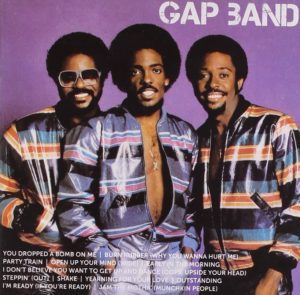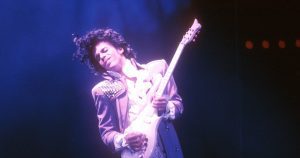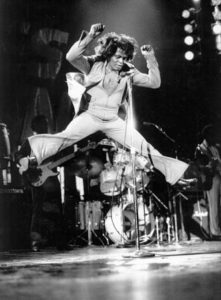
Origin:
Funk started around the late 1960s and early 1970s. It became a popular musical genre around the 1970s and late 1980s. Funk has a rhythmic style and a dance like feel to it. Funk originated from the African American oral tradition that refers to the style of aggressive urban dance music. Funk is driven by hard syncopated bass lines and drumbeats and accented by any number of instruments counter play, all working toward a groove. One of the popular groups during this time was the Gap band. The Gap Band rose to fame around the 1970s and 1980s they were considered a R&B and funk band. The Band consisted of three brothers Robert, Wilson, and Charlie. They were from Tulsa Oklahoma. They began singing and playing in their father’s Pentecostal church at home and music lessons were mandatory for them. The band performed without a name for a short while but eventually settled on the Greenwood, Archer and Pine Street band but adverting a name like that on a poster was too much. They ended up shorting the name to the G.A.P street band but they became the gap band from typographical errors that ending up just making the name “the Gap band’’ which just stuck as their name. They produced the top ten R&B singles ranging from ferocious funk anthems to slow jams. Many of their hits such as Burn Rubber, Why you Wanna Hurt Me, and You Dropped a Bomb on Me featured instantly memorable rippling synthesizer basslines. The Gap Band spent 43 years together and retired in 2010.
Characteristics:
The term funk and funky evolved through vernacular improvisation in the 1950s from the language of jazz improvisation in the 1950s as a reference to a performance style that was a passionate reflection of black experience. During the time funk was popularized the black power movement was taking its place within America. Funk was used in power of this movement. Funk signified associations between harsh realities, unpleasant odors, tales of tragedy, violence, erratic relationships, crushed aspirations, racial strife, and flights of imagination that expressed unsettling and undeniable truths about life. The funk beat was heavily syncopated, aggressive rhythm that put a strong pulse on the first note of the musical measure “on the one”.
Important Performers:
James Brown was an important performer who had his band establish the funk beat and modern street funk in the late 1960s. James Brown and others such as Sly and the Family Stone began to use funk rhythms as their musical foundation while the lyrics took on themes of urgent social commentary. Some other popular performers during this time was Rick James and Prince. They expressed sexuality in their music. In the early 1970s funk became the musical standard for bands such as the Ohio Players and Kool and the Gang and soul singers such as the temptations and Stevie Wonder, its driving beat accompanied by lush melodic arrangements and potent, thoughtful lyrics. Parliament-Funkadelic and other bands sang the praises of funk as a means of self-development and personal liberation, while established jazz artists such as Miles Davis and Herbie Hancock adapted explored the funk groove.



Commodification:
The Gap band would make money by performing at venues around the Tulsa area including country and western joints, tennis clubs, and rock clubs. The bandmembers floundered until they met entertainment businessman Lonnie Simmons. The group was signed under D.J Rogers Simmons who owned a recording studio and nightclub. Being signed under this man allowed the group to navigate with their music on radios and perform in important places.
Social implications/future influences:
In the 1980s the sexually expressive aspects of funk were popularized through the works of Rick James and Prince, while the funk beat became the primary rhythm in black popular music. The influence of funk spread to other styles in the 1980s mixing with the gritty realism of hard rock and punk and the experimentation of much of the electronic music of the time. With the rise of rap music in the 1980s and its sampling of 1970s funk songs, funk grew in stature and significance in hip pop culture. It became associated with ancient mysteries in the black tradition, providing hip-hop with a historical link to artists and cultural movements of the past. As part of hip-hop’s influence on popular culture, funk provided the rhythmic basis for most American dance music of the 1990s.
Conclusory Opinion:
Funk music was created in a time when black people were trying to express themselves in a new form that added to the black power movement. Black people were expressing themselves sexually. Funk music gave a new type of dance feel. It was easy to become popularized on the market because it made people feel good and they were able to dance to the music. Funk music in my opinion was a new form of excitement and expression that was needed within the music world at this time. Funk will live on forever because of the vibrancy that it continues to bring to the dance floor.
[embedyt] https://www.youtube.com/watch?v=MjtOzLfebgY[/embedyt]

